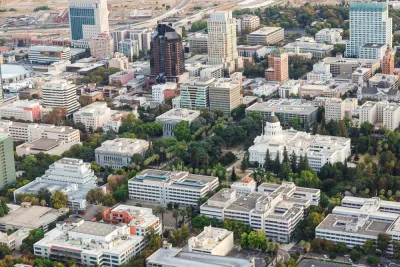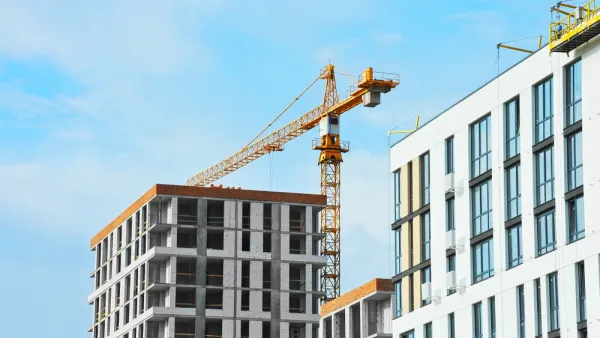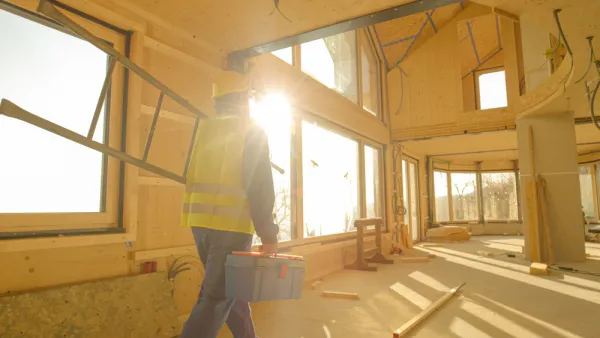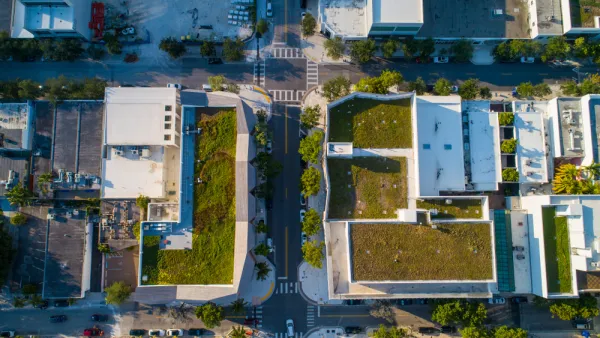California’s Building Code accomplished a first-in-the-nation step to mitigate carbon emissions from the construction and maintenance of buildings, by limiting embodied carbon in some commercial and school buildings.

[Updated August 15, 2023] The California Building Standards Commission (CBSC) and the Division of the State Architect (DSA) recently adopted new building codes that set a new standard in the United States.
According to a press release from the AIA California, California is now the first state set general code standards “to limit embodied carbon emissions in the construction, remodel, or adaptive reuse of commercial buildings larger than 100,000 sq feet and school projects over 50,000 sq ft.”
“In making these changes, California becomes the first state in the nation to set general code standards that require the reduction of embodied carbon emissions in the design and building process applicable to both commercial buildings and schools,” adds the press release.
An article by Dan Roche for the Architect’s Newspaper adds additional insight into the accomplishment, explain that “embodied carbon refers to greenhouse gas emissions that emerge from building materials over their entire life cycle, this includes in manufacturing, transport, installation, upkeep, disassembly, and discarding.”
Representatives from AIA California first proposed the code changes in 2019, reports Roche.
“California follows Norway’s lead which has become a thought leader in embodied carbon discourse. FutureBuilt, a pilot program sponsored by the Norwegian government, is committed to cutting the country’s embodied carbon emissions in half,” adds Roche.
FULL STORY: California becomes the first state in the U.S. to tackle embodied carbon in its energy codes

National Parks Layoffs Will Cause Communities to Lose Billions
Thousands of essential park workers were laid off this week, just before the busy spring break season.

Retro-silient?: America’s First “Eco-burb,” The Woodlands Turns 50
A master-planned community north of Houston offers lessons on green infrastructure and resilient design, but falls short of its founder’s lofty affordability and walkability goals.

Delivering for America Plan Will Downgrade Mail Service in at Least 49.5 Percent of Zip Codes
Republican and Democrat lawmakers criticize the plan for its disproportionate negative impact on rural communities.

Test News Post 1
This is a summary

Test News Headline 46
Test for the image on the front page.

Balancing Bombs and Butterflies: How the National Guard Protects a Rare Species
The National Guard at Fort Indiantown Gap uses GIS technology and land management strategies to balance military training with conservation efforts, ensuring the survival of the rare eastern regal fritillary butterfly.
Urban Design for Planners 1: Software Tools
This six-course series explores essential urban design concepts using open source software and equips planners with the tools they need to participate fully in the urban design process.
Planning for Universal Design
Learn the tools for implementing Universal Design in planning regulations.
EMC Planning Group, Inc.
Planetizen
Planetizen
Mpact (formerly Rail~Volution)
Great Falls Development Authority, Inc.
HUDs Office of Policy Development and Research
NYU Wagner Graduate School of Public Service





























